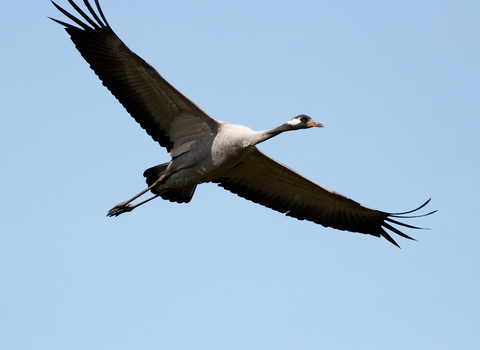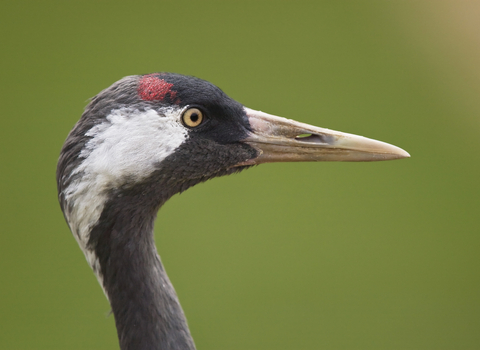
Stefan Johansson

© Neil Aldridge
Common crane
As the UK’s tallest bird the common crane is instantly recognisable with the ruffle of tail feathers and very long legs. Their bugling call is also very distinctive.
Scientific name
Grus grusWhen to see
January to DecemberSpecies information
Category
Statistics
Length: 110-120cmWingspan: 220-245cm
Classified in the UK as Amber under the Birds of Conservation Concern 5: the Red List for Birds (2021). Protected in the UK under the Wildlife and Countryside Act, 1981.
Habitats
About
The common crane has significantly declined across Europe over the last 300 years as vast areas of wetland habitat have been drained for agriculture. A recent breeding programme in Somerset has led to the establishment of a wild population once again. There are also low levels of migration from Europe which may also account for breeding pairs in East Anglia.Distribution
Hunting along with the draining of marshlands led to their disappearance as a breeding bird about 400 years ago, until a trio of migrating birds were blown off course in 1979, ending up in Norfolk. Careful protection, reintroduction projects, and some landscape-scale habitat restoration projects mean that there are now around 160 cranes in Britain.Did you know?
The dance of the cranes is famous worldwide. Heads thrown back, wings flapping, tail feathers fluffed, and feet stamping; this is how they reinforce their pair bonds. Cranes were once so common in Britain that 204 were served roasted at a banquet for the Archbishop of York in 1465.Watch
Crane (https://vimeo.com/444189848)
Crane by Tom Hibbert
